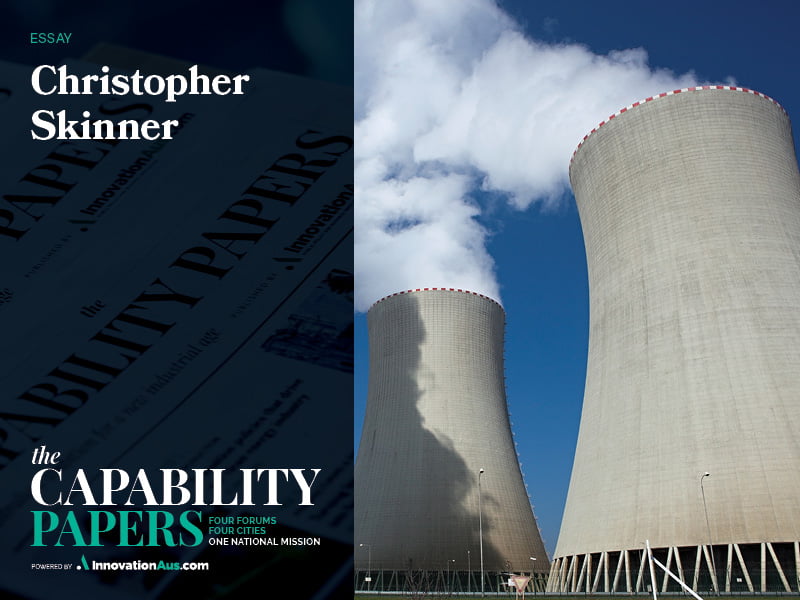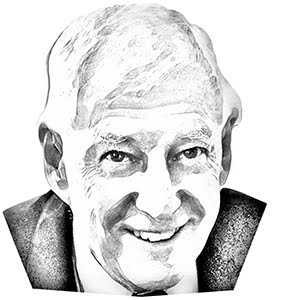Nuclear energy has been the subject of much recent discussion due on the one hand to Australia’s AUKUS pillar one acquisition of nuclear powered, conventionally armed submarines, and on the other to increasing support for the removal of legislative bans on nuclear power as a carbon-emissions-free source of electrical energy.
Australia has maintained a continuous involvement in nuclear science and technology since the establishment of the Australian Atomic Energy Commission in 1952, followed by its current successor the Australian Nuclear Science and Technology Organisation (ANSTO). ANSTO undertakes leading research that has been recognised internationally, leading to Australia being accepted as the 14th member of the Generation IV international consortium engaged in development of several types of advanced nuclear reactors.
There is continuing opposition to nuclear energy in Australia that stems from three primary concerns: proliferation of nuclear weapons; the release of radioactive material from an accident irrespective of whether caused by natural catastrophic events such as earthquakes or tsunamis; and the long-term effects on groundwater supplies from the disposal of residual radioactive waste materials in geologically stable underground repositories.

Nuclear proliferation is already an international issue with the acquisition of nuclear weapons by the Democratic People’s Republic of North Korea (DPRK) and current determination of Iran to acquire them as well. The Republic of South Korea has only desisted from doing so in response to the DPRK because of the steadfast support of the USA.
Australia on the other hand was an inaugural signatory of the multinational Nuclear Non-Proliferation Treaty (NPT) and has reaffirmed that commitment as part of the bipartisan political support for the AUKUS agreement with the US and UK for collaboration on development of strategically important technologies and nuclear submarines. The Australian Safeguards and Non-Proliferation Office (ASNO) is dedicated to continuing its oversight of Australian adherence to the treaty.
The fear of a nuclear accident is understandable and a serious concern but no more so than other catastrophic developments such as major oil and gas facility explosions or major seismic and storm events. The possibility of such nuclear accidents is foremost in the minds of the innovators in the use of nuclear energy for non-weapons applications including nuclear power stations for electrical generation and for propulsion of ships and submarines.
The father of nuclear submarines and the first American nuclear power stations, US Navy Admiral Hyman Rickover, went to extreme lengths to mandate a nuclear mindset based on formal education, explicit qualifications and standards, rigorous regulation and oversight, and the commitment to continuous improvement and formal learning from past experience. This high-level nuclear mindset continues to this day for all nuclear engineering activities and is at the core of the AUKUS program development.
The United Nations International Atomic Energy Agency (IAEA) provides comprehensive guidance and standards for the safe and secure adoption of all nuclear energy applications. Australia has worked closely with the IAEA since its establishment and this collaboration is evident at ANSTO, the Australian Radiation Protection and Nuclear Safety Agency (ARPANSA), ASNO and the recently created Australian Radioactive Waste Agency (ARWA). All are guided by and contribute to IAEA standards, policies and procedures.
Beyond the risks involved with nuclear energy, there is also discussion on benefits and costs with some uncertainty on the likely costs of nuclear power, including in the form of so-called Small Modular (Nuclear) Reactors (SMR) that will be factory produced and transported to site. As New South Wales Chief Scientist and Engineer Professor Hugh Durrant-Whyte remarked recently, it will probably be another decade before these new reactors are in service and the full costs of ownership are known.
The attractiveness of SMRs is they can be readily accommodated within the same geographic site and electrical power distribution network as the current coal-fired power stations that are being shut down. The cost savings in not requiring any new interconnection power lines or land acquisition is significant.
The 18-month study period for AUKUS revealed what may initially be the most difficult challenge is development of what are termed the Nuclear Suitably Qualified and Experience Personnel (NSQEP) to develop, operate and regulate the nuclear energy sector. This is an immediate challenge for the AUKUS program and is being addressed comprehensively to provide the workforce needed to introduce, operate, sustain, and decommission nuclear reactors for submarines and possibly SMRs in the future.
In many ways the urgency that is now perceived in geostrategic matters that has been articulated in the recently completed Defence Strategic Review (DSR) is the catalyst for the recognition that an NSQEP workforce is essential and must be developed for AUKUS to be achieved. This then provides the basis for wider consideration of nuclear energy in Australia.
The Australian peak engineering body Engineers Australia has recognised this need and is developing nuclear engineering as a defined area of professional engineering practice based on experience of the more than twenty other areas of formally recognised engineering practice. Nuclear engineering competency is guided internationally by the IAEA, the US Navy, and the UK Nuclear Institute, and domestically by the Australian Nuclear Association (ANA) and academic leaders at the Australian National University and the University of New South Wales.
Nuclear energy as currently applied is based on uranium fuel and the plutonium that is a byproduct of controlled nuclear fission. Questions are frequently raised about the use of thorium that is also subject to nuclear fission but not used in nuclear weapons. The answer seems to be more about economics than science in that vastly more research has been applied to the uranium nuclear fuel cycle and it is generally better understood.
Another frequent question is “what about nuclear fusion?”, the basis of the sun’s continuing energy on which all life depends. There is very active research towards attainment of practical nuclear fusion and it has been demonstrated for very brief periods. But it is still many years away from practical deployment.
Australia’s better future will depend on the mitigation of climate change, the avoidance of major regional conflict or disruption of international trade and commerce, and the access to resources, energy and trustworthy intercommunication. Nuclear energy can contribute to this success by purposeful inclusion in the portfolio of energy sources needed to meet future demand from electric vehicles and aircraft all the way to processing of resources to add value before export, and supporting industry for innovation in manufacturing, production and construction.
Nuclear energy must always be managed safely and securely and that in turn requires a so-called nuclear mindset on safety and security. This is already in place at ANSTO and is being developed rapidly more broadly thanks to AUKUS. We are seeing major encouragement for STEM education in schools to underpin the development of the NSQEP workforce and that will in turn enhance innovation and entrepreneurial business development throughout the community.
The scale of the AUKUS undertaking has mesmerised some observers who note the unprecedented scale and complexity, comparing it to the Snowy River hydroelectric project. The reality is that AUKUS has unlocked a challenging bright future for Australian science, technology and industry, the like of which would not have been possible without the clearly articulated support of the USA and UK and the bipartisan support within Australia.
Nuclear energy demands attention to safety in ways that are recognised as world’s best practice. These could include formality of procedures, the everlasting search for improvement or the welcoming of a questioning attitude by all participants and observers, both regulators and the general community. Asking of any participant: ‘Why is it so and when will that be applied?’ must always be answered with a respectful and informative response that answers the questions fully without turning into a lecture or general dissertation.
In conclusion, the future for the Australian electricity grid cannot rely solely on renewable energy that is intermittent at best and sometimes not available. The electric grid has provided reliable service of low cost safe and stable power for decades. Inclusion of nuclear energy to underpin this in a fossil-fuel free future will contribute to continuation of that high standard at affordable prices. Nuclear reactors are essentially a source of heat, and this can also be put to use for other heat-reliant processes. The future for industrialised applications such as hydrogen production is only now becoming apparent.
Nuclear energy is indeed a part of Australia’s better future.
Christopher Skinner Captain RAN (retired), Nuclear Propulsion Roadmap for Australia® served for thirty years in the Australian Navy as a weapons and electrical engineering officer in six surface warships. This included South-East Asian Treaty Organisation in Singapore, the Vietnam war and surveillance of the North-West Indian Ocean. Shore service included secondment to the US Naval Sea Systems Command in Washington DC as FFG-7 lead ship Test and evaluation manage, and as the initial project director for the ANZAC Frigate program of ten ships for Australia and New Zealand. He is currently the secretary of the Engineers Australia Nuclear Engineering Panel.
Do you know more? Contact James Riley via Email.

